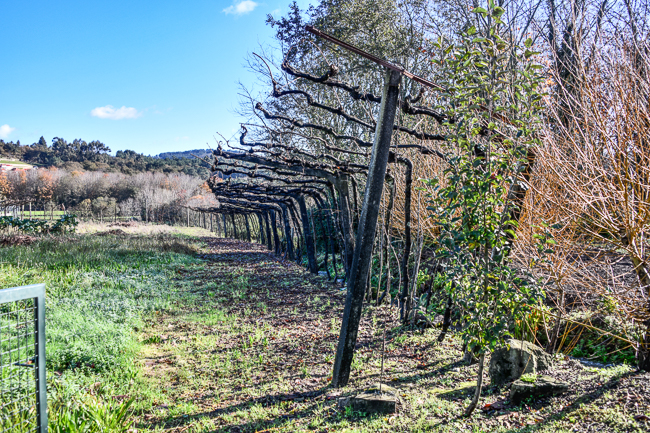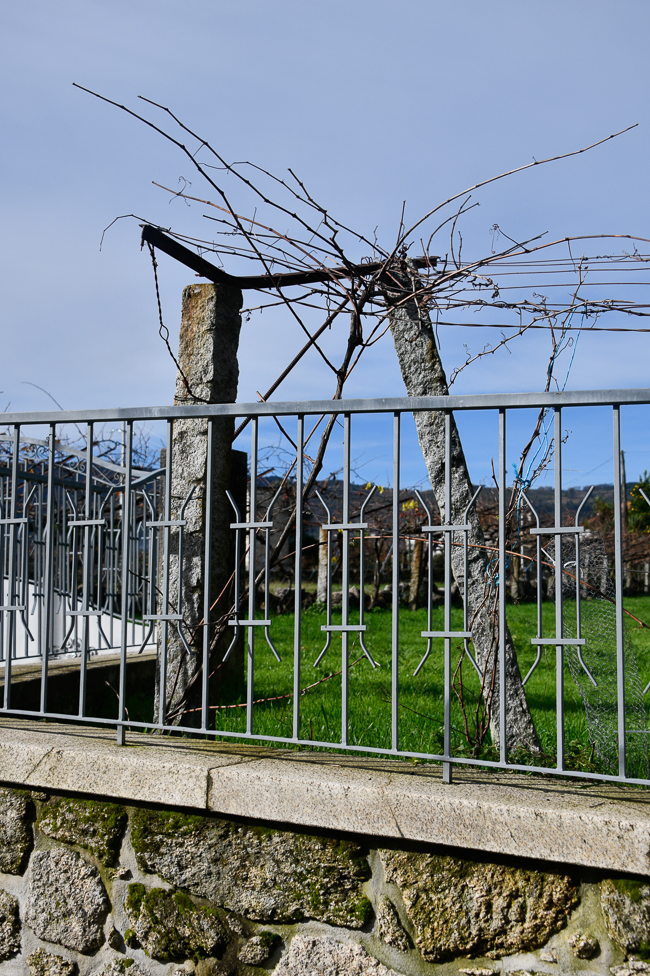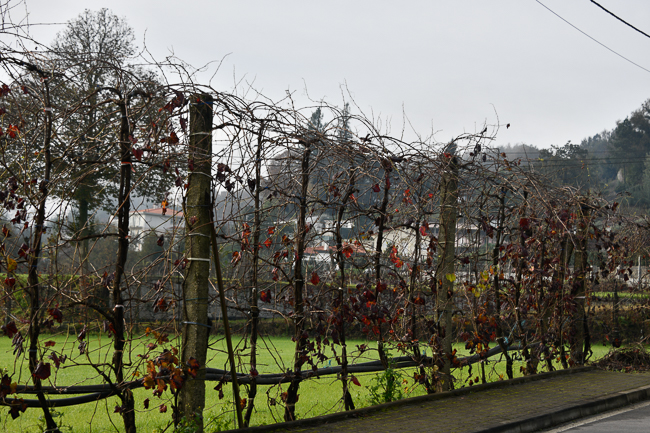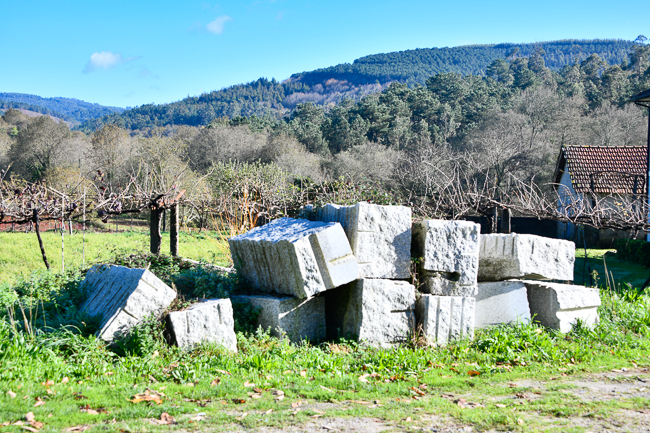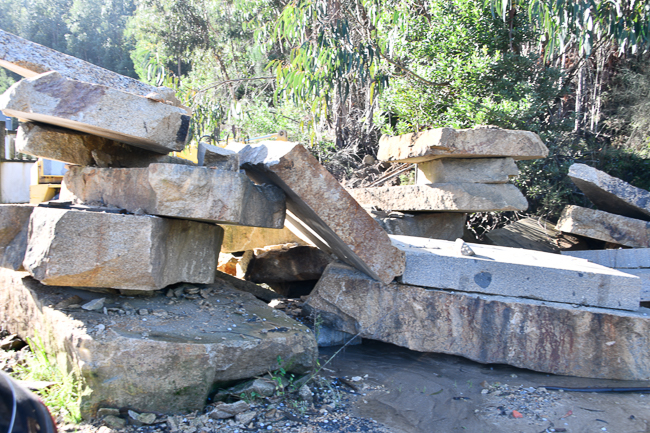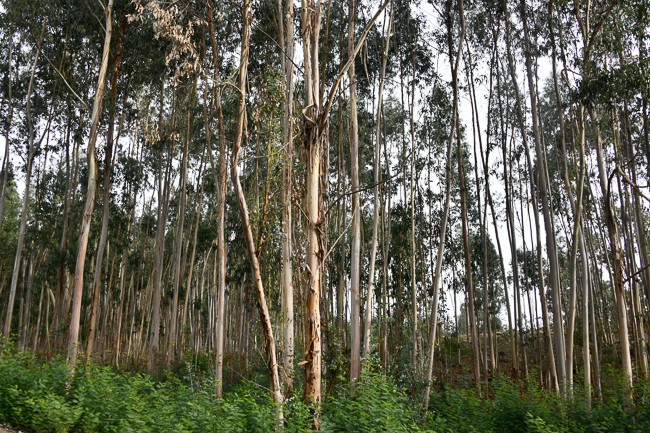November 2022
The dominant white grape varieties of this area are Alvarinho, Arinto (locally known as Pedernã), Avesso, Azal, Loureiro, and Trajadura, while the red varieties are Borraçal, Brancelho, Espadeiro, and Vinhão.
The white wines are particularly refreshing, many of which, when tasting, were referred to as swimming pool wines. The region began producing sparkling wines in 1999, and those have been a treat to find.
The soils of the region are mostly granite and are very fertile.
When driving around one of the first things you notice is the unusual way the vines are grown. This area is known for its “enforcado vine” layout, with vines intertwined in the trees, or the pergola system, also known as “latada”.
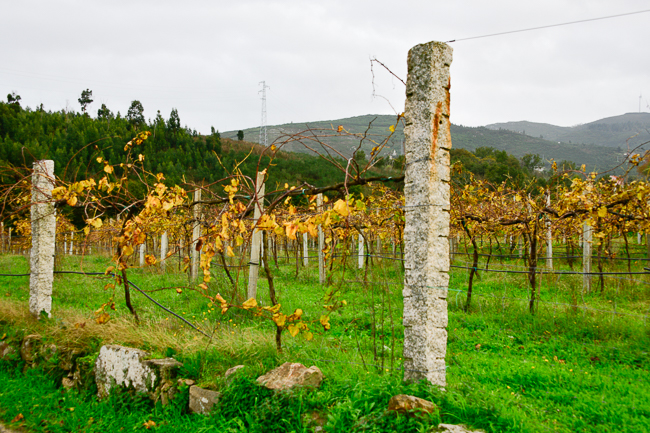 One also finds the cruzeta system (cross or cross-raising) which derives its name from the appearance of the granite pillars, which are either topped with another granite cross beam or wire. Between the crosspieces, there are strings of wire. The vines are pulled up on these to reduce the risk of fungal infection.
One also finds the cruzeta system (cross or cross-raising) which derives its name from the appearance of the granite pillars, which are either topped with another granite cross beam or wire. Between the crosspieces, there are strings of wire. The vines are pulled up on these to reduce the risk of fungal infection.
Single Guyot is one of the most common methods for training vines, particularly in cool climates where late-season frost can be a threat. This cane-pruning system consists of a trunk and a single fruiting cane. The cane is draped over a horizontal support wire.
At one time, many growers would train the vines to climb trees, fences, and telephone poles. This was to maximize production and to be able to produce both wine and vegetables on the same land. While not used that much, you still see it on smaller plots of land.
Granite
The other noticeable thing is the granite. You will see blocks the size of automobiles used in wall building and then the posts as mentioned in the vineyards.
As it has been raining steadily and heavily, the roads are also covered in fine pebbles of granite that has washed down off of the hillsides.
With funding from the EU Ponte de Lima has become a hub for the quarrying and processing of granite. Quarrying employs more than 350 people in the area, while about 500 work in processing. France and Spain are the largest importers of granite from Ponte de Lima.
Total investment for the project “Industrial Pole of Granite of Fine Stone” was 3,649,676 Euros with the EU’s European Regional Development Fund contributing 2,062,309 Euros through the “Norte 2020” Operational Programme.
Eucalyptus
Eucalyptus was first introduced to Portugal in the late 18th century by British botanist, Sir Joseph Banks. You see them everywhere crowding out the native flora. Eucalyptus covers over 22,000 acres, a quarter of total forest land in Portugal, displacing native oaks, laurels, and chestnuts.
They’re simple to grow, three times as lucrative as cork, and can be harvested within 12 years. In Portugal, the plant is used mainly for pulp in paper making. The oils are resins are also harvested and the trunks are sometimes used in construction. Unfortunately, the trees are also highly flammable.
The attempt to rid the country of this invasive plant goes back decades, continually running into opposition from Portugal’s powerful paper industry lobby. The lobby continually espouses that “The ban would destroy thousands of forestry jobs, many in badly depressed regions.” Paper export is huge in Portugal. In 2017, after devastating forest fires, that killed 64 people, and injured many more, the government banned new plantings of Eucalyptus.
